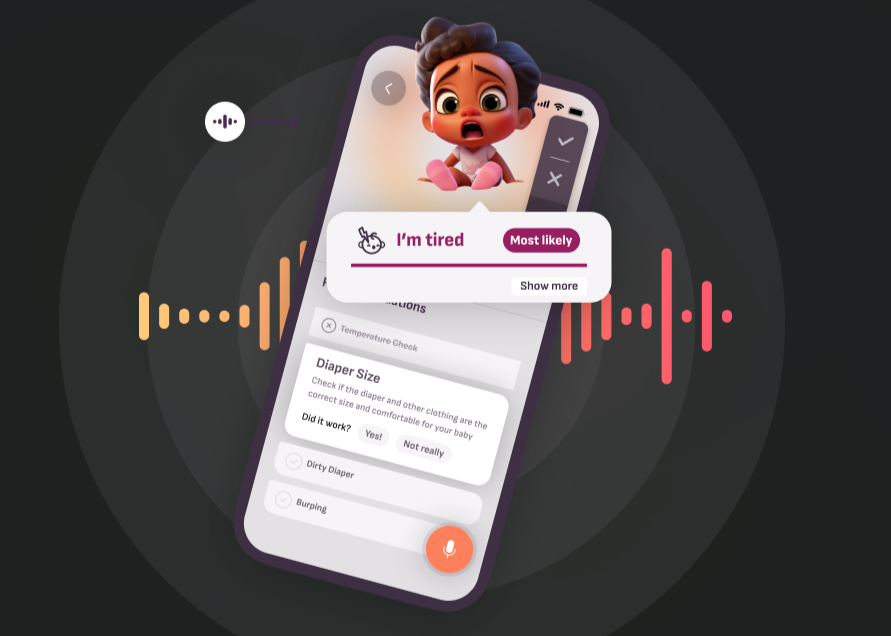Software
AI can translate whales, bees and… your baby
A new app that started life in Nigeria shows once again how AI can change the world, writes ARTHUR GOLDSTUCK.
When the Roman scholar Pliny said Africa always brings forth something new, he wasn’t thinking of Nigeria – his countrymen had barely reached West Africa. Today, he would hardly be talking about anywhere else.
In the realms of artificial intelligence, there is always something new out of Africa and out of Nigeria. One of the latest innovations may well change the lives of parents around the world. From a startup called Ubenwa Health, it’s called Nanni AI and is described as an AI-powered translation app for babies. It was launched in February by Nigerian Charles Onu and Canadian Samantha Latremouille, co-founders of Ubenwa – “the cry of a baby” in the Igbo language.
They said they had developed “the first foundation model for infant cries”. Tech magazine C-Net took a slightly less academic approach, describing it as “Shazam for baby cries”.

It began with research into baby cries conducted in Nigeria by Onu before he moved to Canada, where he earned a doctorate in machine learning from McGill University and met Latremouille. They began conducting research into using crying to detect the risk of neurological disorders in newborns.
Within a month of launching Nanni AI, they were able to claim on Twitter: “1-million #newborns ‘WAAAAH’ heard and understood, bringing us a step closer to our mission of early detection and monitoring of neurological and respiratory conditions in infants.”

In May, they announced: “With over 1.5-million cries analysed and counting, we’re on a mission to improve the well-being of both babies and parents.”
While the interpretation of a cry is not a translation as such, said Ubenwa, “Nanni AI empowers parents to understand the emotions behind their baby’s cries.”
In this sense, it represents an evolution of the capacity of AI to interpret communication that was previously thought impossible – across human and animal species.
A new study published in the journal Nature Communications last month showed that researchers from the Massachusetts Institute of Technology computer science and AI laboratory (CSAIL), working with Project CETI (Cetacean Translation Initiative), had used machine learning algorithms to decode the “sperm whale phonetic alphabet”. The study revealed sophisticated structures in sperm whale communication that paralleled human phonetics.
It turns out that sperm whales use a series of clicks, known as codas, to communicate. The codas are similar to Morse code, consisting of patterns of short and long clicks. Large-scale acoustic data collected from whale populations in the Caribbean was paired with behavioural data, and used to train AI models to recognise and interpret whale communication in context.
The next step: exploring the potential of translating these whale sounds into human-understandable language. By creating a map of whale communication, the goal is to eventually enable a two-way interaction between humans and whales.
Daniela Rus, CSAIL director and professor of electrical engineering and computer science at MIT, says the findings challenge the prevailing belief among many linguists that complex communication is unique to humans.
Further, understanding whale communication is expected to provide insights into their social structures, behaviors, and the impact of environmental changes on their populations.
It echoes a study that has been under way for more than five years at the Reading, England, campus of database software leader Oracle. A cluster of beehives connected to a network of wires, sensors, monitors and transmitters is being used to monitor colony acoustics, brood temperature, humidity, hive weight, bee counts and weather conditions – and using AI software to interpret the communication of the bees.
The hives are integrated into the World Bee Project, a global honeybee monitoring initiative. Last year, the Project was selected by Atlas of the Future as one of 25 projects that can save the world.
Not to mention saving bees, whales and babies.
• Arthur Goldstuck is CEO of World Wide Worx and editor-in-chief of Gadget.co.za. Follow him on social media on @art2gee.



















